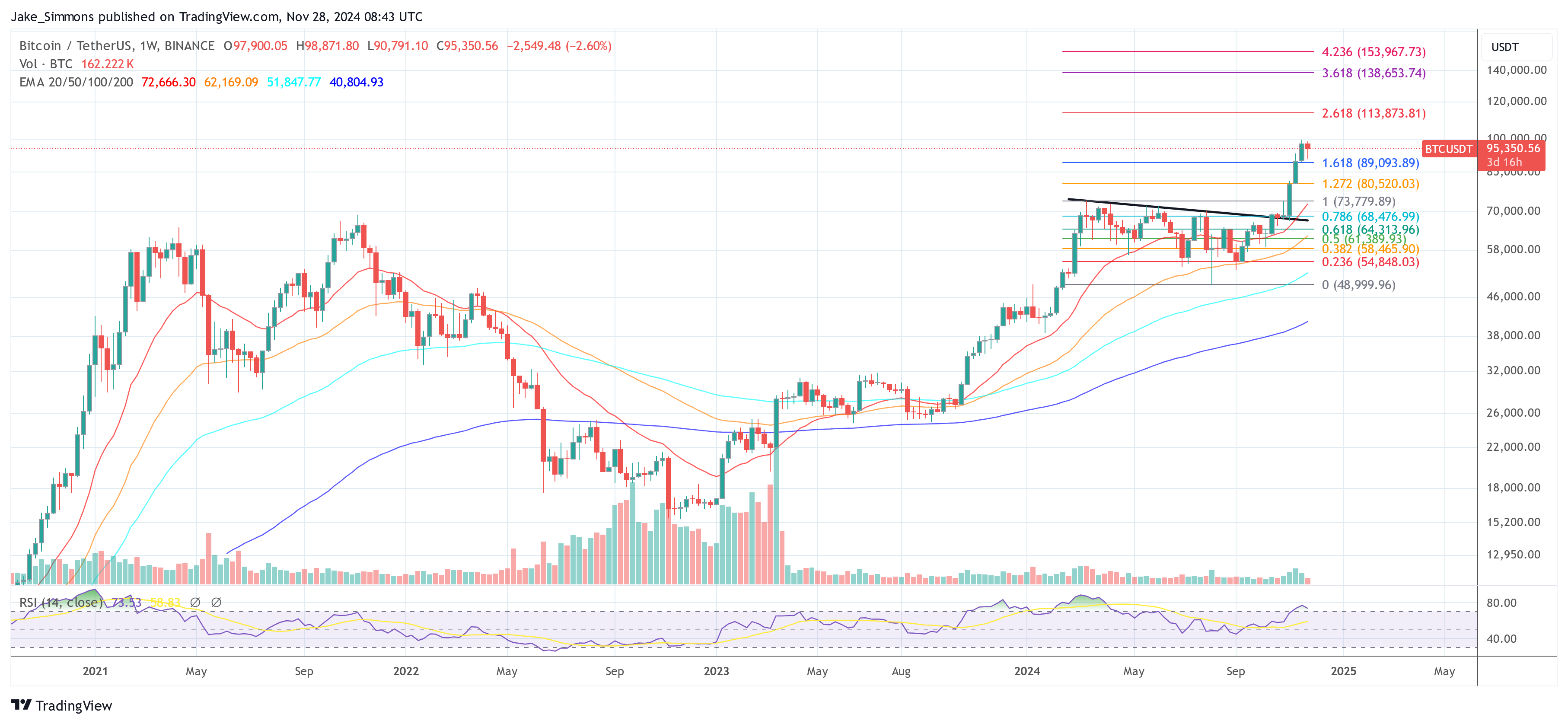This article is available in Spanish.
In one interview along with Mario Nawfal, Jan van Eck, CEO of the $118 billion global asset manager VanEck, offered an analysis of Bitcoin’s potential trajectory, the US budget deficit and the broader financial markets. Contrary to some hyper-bullish predictions, Van Eck gave a more conservative price target for Bitcoin for this bull run.
Van Eck stated: “Our thesis is basically that Bitcoin will stick to the halving cycle, so we are looking at a price target of around $150,000 to $180,000 this cycle.” He dismissed the idea that Bitcoin could reach $400,000 in the current cycle, suggesting such a milestone could be reached in the next cycle. “In the next cycle it will reach my target of half the value of gold, so $400,000 plus, depending on the gold price,” he added.
When Van Eck discussed the US budget deficit, he called it “the elephant in the room” and a major concern for the markets. “We are spending money that is completely unsustainable, and any other country would be heading towards bankruptcy,” he noted.
Related reading
He outlined two prevailing schools of thought in Washington regarding fiscal policy. The first is the lobbyist perspective, which argues that it is impossible to make significant spending cuts that would result in a minimal slowdown in the growth of the budget deficit. The second is the “extreme disruptors” approach, which calls for a $500 billion cut in government spending.
Van Eck attributed this figure to Vivek Ramaswamy, co-head of the Department of Government Efficiency (DOGE), stating: “They can make that happen because there are 1,200 programs that are no longer authorized but are still spending money, which means they can stop them with an executive order.” He described this target as “sound” and “realistic,” although he acknowledged that it would not eliminate the entire deficit, which was $1.8 trillion last year.
In his response to the market’s reaction to the election of President Trump, Van Eck found it curious that, despite a clear election result, uncertainty remains about fiscal policy. “We have done a survey by one political party, but we don’t really know what their fiscal policy will be,” he noted.
He noted that the initial market reaction was negative for gold due to the possibility of government restructuring. “The initial reaction was negative gold, because the idea was, wow, maybe they’ll be able to restructure the government. Never bet against Elon, right?” he said.
Related reading
Van Eck also commented on geopolitical tensions, especially the situation in Ukraine and the approval of long-range missiles that strike deep into Russian territory. While he acknowledged that such events could impact markets, he warned: “The problem is that geopolitical issues are completely uninvestable. We never know what the next headline will be, and we don’t know if it will be bullish or bearish.” He advised that professional investors often choose to do “nothing at all” in response to geopolitical uncertainties.
Catalysts for Bitcoin Price
Regarding institutional interest in Bitcoin and regulatory shifts, Van Eck emphasized that the regulatory environment plays a crucial role. “It really depends on the regulations,” he said. He pointed out that while regions like Asia have seen regulators give the green light, the US has been relatively quiet. However, he noted a recent increase in interest: “Now, with the new regime, suddenly the phone is ringing.”
Van Eck revealed his personal investment stance, saying: “That’s why I have a huge personal investment in Bitcoin and gold.” He expressed optimism about Bitcoin’s maturation process, likening it to a growing child: “I would say it’s a bit like a teenager, and what makes it mature is new investors coming in.” He noted that while individual investors have embraced Bitcoin ETFs, the asset management industry has not yet fully embraced them.
When addressing the correlation between Bitcoin and traditional markets, especially the NASDAQ, Van Eck admitted his concerns: “What worries me most […] Bitcoin’s correlation with the NASDAQ was high.” He explained that this high correlation made Bitcoin less attractive to professional investors who were already overexposed to mega-cap tech stocks. However, he remains hopeful that Bitcoin’s correlation will decline: “Rooting and expecting the correlation to return to zero, which has been the case over the long term.”
At the time of writing, BTC was trading at $95,350.

Featured image created with DALL.E, chart from TradingView.com

